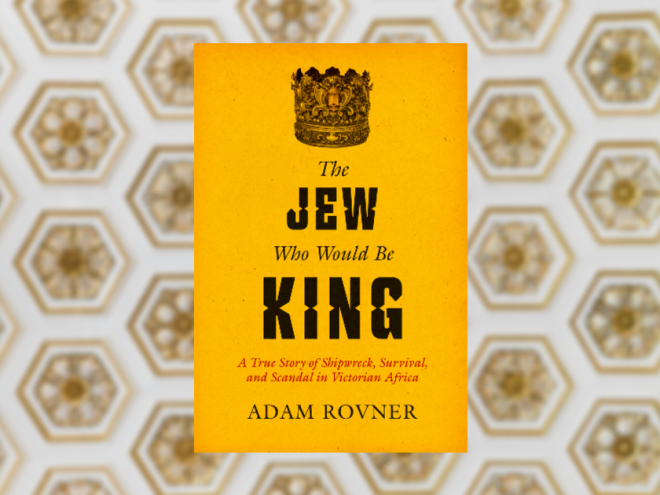Nathaniel Isaacs (1808−1872) can generously be described as a sailor, an entrepreneur, a writer, a diplomat, and an adventurer. There is strong evidence that he was also a slave-trader, an absentee father, a vicious mercenary, and a general dissembler. Adam Rover’s Isaacs’s biography of Isaacs, The Jew Who Would Be King, functions as an entry point into discussions of colonialism, racism, antisemitism, Christian missionization, and political strategy. It is also a case study in responsible historiography and biography, narrating the life story of a person who did terrible things without neglecting the memory and significance of his victims.
The Jew Who Would be King traces Isaacs’s life from his birth into a Jewish family in Canterbury, England to his death at sea. At fourteen, he was apprenticed to his uncle Saul Solomon, a merchant on the island of St. Helena, roughly a thousand miles off the coast of West Africa. (Napoleon was exiled to the island during Isaac’s time there.) Isaacs gained skills that would serve him economically and interpersonally when, in 1825, Isaacs boarded a ship named The Mary. After several stops, The Mary was shipwrecked on Port Natal (contemporary Durban, South Africa). During his time in Africa, Isaac became entangled with King Shaka Zulu, the ruler of the Zulu Kingdom. Isaac sought to gain control of parts of the surrounding area with Shaka’s consent. Fickle and moody, Shaka, once feeling slighted, forced Isaacs to join his army. With Shaka, Isaacs served as a mercenary soldier and trader in ivory, hippopotamus teeth, and gum. Isaac’s account of Shaka’s brutality and vanity may have been sensationalized, but likely not fabricated; African sources attest to his violence and his desire for a hair tonic called macassar oil.
After Shaka was murdered, Isaacs returned to Britain and published the two-volume Travels and Adventures in Eastern Africa in London in 1836. The book was remarkably popular, shaping perceptions of the “savage” lands to which Isaacs traveled and King Shaka Zulu. The book trades on orientalist and racist stereotypes of Africa while also portraying Shaka as a skilled ruler.
As a Jew, Isaacs fit uncomfortably into the nineteenth-century British racial imaginary. Jewish people were often pushed into marginal economic roles in society, leading to negative economic and hygienic stereotypes. Their place in the burgeoning racial hierarchy among “Black” Africans and “white” Europeans was debated. Despite his Jewish heritage, Isaacs was not traditionally observant and would strategically hide his Jewish identity.
While in Africa, Isaacs fathered (and usually abandoned) several children. Although little information about them or how their mothers came to know Isaacs is available, additional context for these kinds of entanglements and their attendant power dynamics would be beneficial to the reader.
Isaacs returned to Africa as a merchant and colonial commissioner tasked with negotiating an end to slave trading. Despite this, he gained control of the remote Matakong Island, and there is ample evidence that he was engaged in the slave trade. Several Europeans strove unsuccessfully to bring him to justice.
Rovner brings the nineteenth century to life, with its attendant disease, violence, and colonial machinations. He compares European and African perspectives when possible (e.g. using the isiZulu term abelungu for white people). His antihero, Nathaniel Isaacs, emerges as an amoral opportunist; one with a specific set of opportunities that are inconceivable to us today.
Brian Hillman is an assistant professor in the Department of Philosophy and Religious Studies at Towson University.





